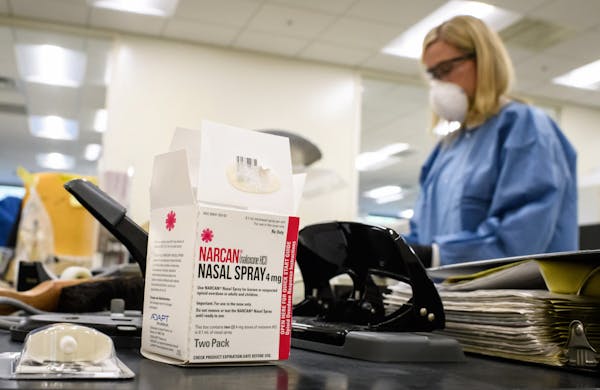Vilye Yang knows how the Ramsey County drug court works. He counts himself among the hundreds who veered off the dangerous path of addiction thanks to it.
As he stood before the group of court workers and fellow addicts in recovery Friday, Yang, 37, told the story of how he was born and raised in St. Paul as the son of Laotian immigrants. Recreational drug use with friends, he said, ballooned into a decadelong addiction that felt like "a very long and lonely road."
That road soon landed him in jail, where a representative of Ramsey County's Adult Substance Abuse Court offered him a way out in return for entering its treatment program. It was there that he learned how to wash clothes, budget his food, care of himself, and most important, stay clean.
"When I was in jail, and when I was in treatment and in drug court, [the] only thing I was thinking about was, 'Please God, just give me a little bit of normal. I just want to have a normal life,'" Yang said. "I just want to live a normal life, normal job, and just for things to be normal. It took a long time for that to really happen."
Yang was among dozens gathered Friday in the Ramsey County Courthouse to celebrate the 20-year anniversary of the Adult Substance Abuse Court, a drug court that partners substance use offenders with social workers, probation officers and others in order to help offenders find sobriety.
Old and new graduates gathered for the event, catching up on each others' lives and to hear testimonials about the court's effectiveness. Chief Ramsey County District Judge Leonardo Castro said the court is critical for helping people with substance abuse and mental health disorders.
In 2020, he said, more than 91,000 people died from drug overdoses in the United States. In the country's prisons, 65% of all inmates have a substance abuse disorder, and $80 billion is spent on incarceration annually. He cited federal data that shows participating in treatment court can reduce offenders' chance of recidivism by up to 26%.
"So it doesn't matter what angle or what perspective you have as it relates to treatment courts ... [they] are necessary, and they work," Castro said.
Evidence of treatment courts' success is mounting now, but it was not so easy to prove before.
Joanne Smith, the first woman to be appointed chief judge in Minnesota, said that when she founded the Ramsey County program in October 2002, she did so on "a wing and prayer."
Hennepin County already had launched a drug treatment court years prior, but many clients were breaking the law again soon after leaving it. It was hard to convince potential stakeholders that the court could be successful, but Smith said she saw many Southern states normalizing treatment courts as way to reduce jail populations.
"And I thought, with my Northern arrogance, what's wrong with us? Why aren't we doing this?" Smith said. "When I see an obstacle, I see an opportunity. That grows out of my stubbornness, or my perseverance. We faced many of those along the way, but we never gave up. And here we are 20 years later."
The court is one of 70 treatment courts across Minnesota, with at least one in each of the state's 10 judicial districts. Among them are DWI Court, Veterans Court, Mental Health Court and Juvenile Drug Court. The Ramsey County program is designed to provide participants with the opportunity to break the cycle of substance abuse by using assessment, drug and mental health treatment, strict supervision, random testing and regular court hearings, along with immediate sanctions and incentives to help participants stay drug free.
Hundreds of people have graduated from Smith's court, and it has earned national recognition that has included invitations to mentor other jurisdictions' courts.
Yang acknowledges that recovery isn't easy. More than a dozen years later, he still has nightmares of using drugs. But through all that time, he has remained sober. He's the manager of a manufacturing facility, and in 2016 he bought a house — and a Cadillac. He's also a proud father of seven children, ranging from 11 months to 18 years.
"Yeah," he said. "Life is good."
-
Brooklyn Park police make arrest after asking for help in search for man suspected of sexual assault at gunpoint

Attorney Tayler Rahm wins GOP backing in battleground Second District
North Oaks withdraws request for density exemption from Met Council

